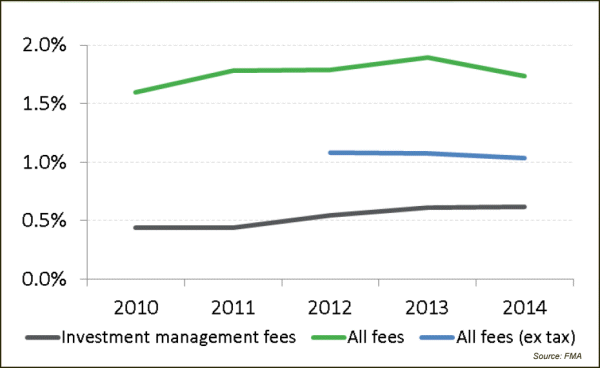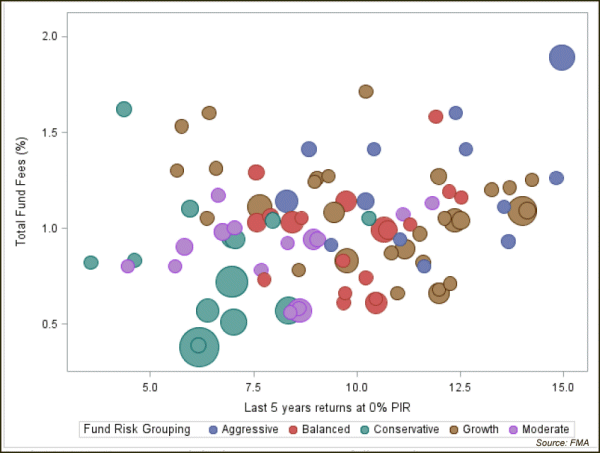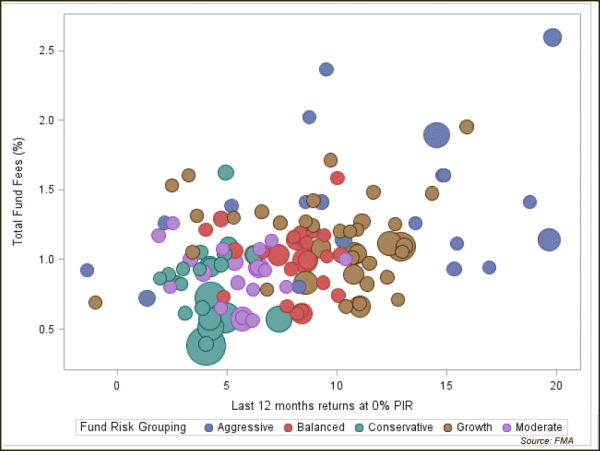KiwiSaver fees under the spotlight
[With graphs] Fees KiwiSaver managers are charging fund members are starting to come under scrutiny now providers are required to make quarterly disclosures.
Thursday, August 14th 2014, 6:00AM  10 Comments
10 Comments
Currently there is $21.4 billion invested by 2.3 million members in KiwiSaver and because of its size and importance to financial markets is getting more attention from the regulator.
FMA head of supervision Kirsty Campbell says that 66% of members are in bank run schemes and these schemes are seeing strong growth in funds under management and in membership, especially compared to non-bank schemes.
She can "see why there are concerns about switching practices."
The regulator's analysis of the March quarterly disclosure documents show that investment management fees have been rising and this may be because of performance fees, however overall fees have shown a slight fall.
[Article continues below]

Campbell says the FMA has done some analysis of fees and the following two graphs show there are some outliers. (The circles are coloured to illustrate fund risk profile and each circle's size represents the size of the fund).
"Some are being followed up to see if there is a reasonable explanation (why fees are high)," she says.
GRAPH: Fees and five year returns

GRAPH: Fees and 12 month returns

| « Advisers to do AML due diligence for fund managers | IFA working on pro-bono offering » |
Special Offers
Comments from our readers
Incidentally in the last 12 months, the Financial Times reports, that low cost funds ie ETF’s have attracted huge amounts of new funds which used to go to higher cost funds. Investors are waking up. I think Philip Coggan in his Buttonwood column in the Economist touched on this recently too. Best practice is to have some active managers and some passive. Regards Brent
There are a few nearly as good returns at much lower fees but there are also an awful lot of MUCH lower returns at lower fees.
It is return after fees that counts. I'll take over 15% return over 5 years paying 2% over a 10% return paying 1% in fees every time.
Whenever you pay for something what you pay goes to somebody else, that's what "paying for" means.
That being said there are certainly some managers charging high fees for dismal performance.
Who is that conservative fund top left corner?
We have asked for more information but are still waiting for a response.
However not every investor is in the top performing fund so rather than picking an extreme example I'd prefer to look at the overall picture.
If higher fees deliver higher returns then you'd expect the distribution to resemble an upward sloping line for each risk grouping, which it doesn't.
You do get what you pay for - although to be fair there is an aweful lot of "noise" out there. Part of the solution is having a screen/research/ability in place to filter out those capabilities that simply don't justify their fees
Specifically: too many advisors are being lured into passive/quasi-passive strategies & being charged active fees. I tend to agree with the likes of Brent Sheather, whereby the defining argument for investing in passive strategies continues to be the price you pay
I'd like to see a benchmark passive return added relative to risk to see by what margin the fund has added return relative to fee.
"You get what you pay for" misses the point on so many levels.
The 5 year chart just seems to confirm what we already know - return is relative to risk, fees are not a great indicator of the value that a manager will add, and the underlying asset mix is related to fees; i.e. the more volatile the asset return is the more management fee is charged. What isn't answered is why and if this charge is justified against a passive portfolio.
Given the dispersion of some fund types, it also indicates that the broad terms used in the industry are still not adequately defined.
I'd like to see an after fees and tax return against unit of risk taken.
Sign In to add your comment
| Printable version | Email to a friend |



